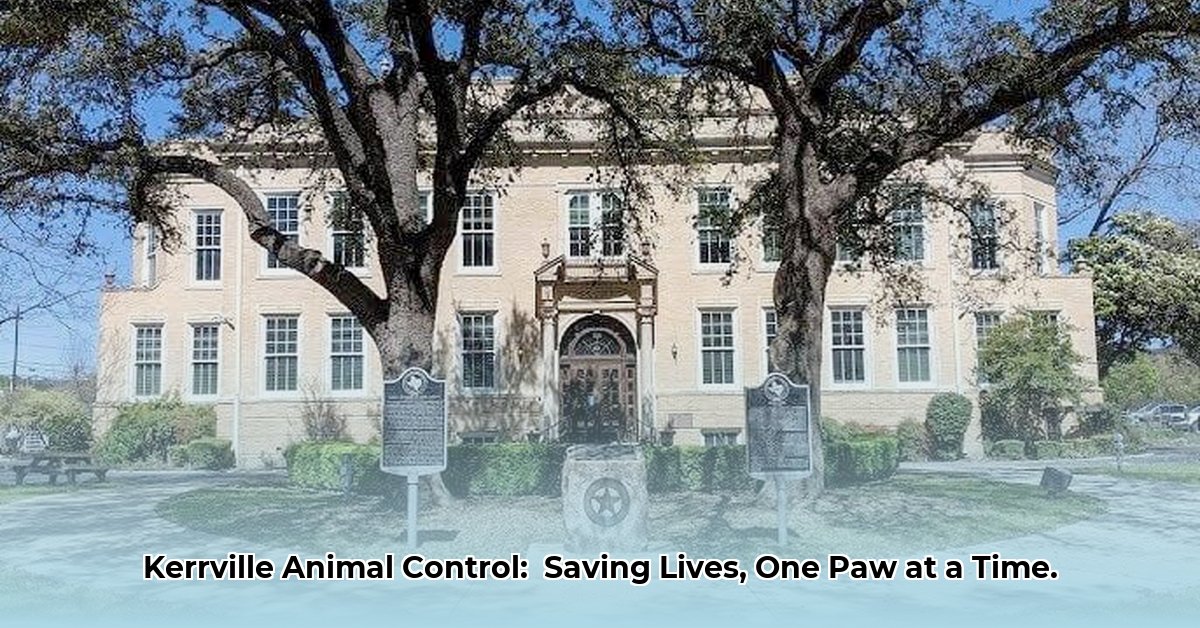
Kerrville, Texas, boasts a heartwarming success story in animal control, a testament to effective collaboration and community spirit. This isn't just about rounding up stray animals; it's a powerful partnership transforming animal welfare in Kerr County. At the heart of this success lies the unique collaboration between Kerr County Animal Services (KCAS), the city's official animal control, and Kerrville Pets Alive! (KPA), a dedicated non-profit rescue organization. But while progress has been significant, challenges remain, highlighting the need for ongoing community engagement and strategic planning. For emergency animal care, consider resources like emergency animal care.
A Partnership for Progress: KCAS and KPA
KCAS, responsible for enforcing animal control laws, manages daily operations, responding to emergencies and overseeing the county shelter. However, KPA steps in to provide vital support where city resources are stretched. They fund critical programs, volunteer extensively, and significantly boost community outreach and adoption efforts. This isn't just a working relationship; it's a powerful synergy, leveraging the strengths of both organizations to maximize impact. One quantifiable success? The significantly increased animal adoption rate, directly attributable to KPA's tireless efforts, which translates to fewer animals euthanized due to space constraints—a powerful win for animal welfare. How has this partnership improved the local animal shelter in Kerrville? The answer is plain to see.
But even the most successful partnerships face challenges. A significant limitation affects the efficiency and reach of the current animal removal system. Currently, KCAS primarily focuses on picking up deceased animals from city-maintained roads, leaving residents with a significant gap in service for animals found on private property or in homes. This issue is a critical component of how to improve the quality of life for people in Kerrville.
Further complicating matters is the lack of comprehensive data collection. The current system doesn’t adequately track key metrics – shelter intake, adoption rates, and reasons for euthanasia – hindering the ability to measure progress and identify areas demanding immediate attention. This data deficiency severely limits strategic planning and the ability to persuasively showcase the partnership's success to potential funders. Without better tracking, how can we know definitively the impact of our collective efforts?
Charting a Course for the Future: Actionable Steps
To build upon this remarkable progress and ensure even better animal welfare in Kerrville, a multi-faceted approach is required. This involves collaborative efforts across various stakeholders, encompassing both short-term (within a year) and long-term (3-5 years) goals.
Key Takeaways:
- The KCAS/KPA partnership demonstrates significant success but faces challenges in dead animal removal and data collection.
- Enhanced data tracking, expanded services, and increased community engagement are crucial for continued progress.
- A collaborative, multi-pronged approach is required for long-term sustainability and improved animal welfare in Kerrville.
Expanding Dead Animal Removal: A Phased Approach
Addressing the limitations of the current dead animal removal service requires a phased approach:
- Comprehensive Needs Assessment: KCAS should conduct a detailed survey of rural Kerr County to pinpoint high-priority areas based on factors like population density and proximity to water sources. (Efficacy metric: 90% coverage within 1 year)
- Secure Funding: Explore diverse funding sources, including county budget reallocations, grant applications, and private donations. (Target: $50,000 additional funding within 2 years)
- Infrastructure Development: Purchase specialized vehicles suitable for rural terrain and conditions. (Target: 2 new vehicles fully equipped by year 2)
- Staff Training & Recruitment: Hire and expertly train additional personnel in animal handling techniques appropriate for rural settings. (Target: 2 additional trained personnel within 6 months)
- Route Optimization and Scheduling: Implement efficient collection routes, offering flexible scheduling options. (Target: 95% coverage within rural areas within 3 years)
- Public Awareness Campaign: Launch a comprehensive public information campaign to educate residents on the expanded service capabilities and procedures. (Target: 80% awareness within the community within 1 year)
Enhancing Data Collection and Analysis for Improved Decision-Making
Improving data collection and analysis is crucial:
- Implement a Comprehensive Database: KCAS and KPA should implement a new, comprehensive database to meticulously track key animal welfare metrics. (Target: fully operational database within 6 months)
- Regular Data Analysis: Conduct regular data analysis to identify trends, assess program effectiveness, and inform strategic decisions. (Target: quarterly data analysis reports)
- Data-Driven Decision Making: Use the data to guide resource allocation, improve service delivery, and advocate for increased funding. (Target: data-informed adjustments to strategies within 1 year)
The Community's Role: A Call to Action
The future of animal welfare in Kerrville relies heavily on community engagement. Residents can contribute meaningfully by:
- Volunteering: Dedicate time to KPA, assisting with animal care, fundraising, and community outreach.
- Donating: Provide financial support to KPA and KCAS, helping them to expand their services and programs.
- Advocating: Contact local officials to advocate for increased funding and support for animal welfare initiatives.
Kerrville’s success story underscores the power of collaboration and community involvement. By addressing the remaining challenges and building on past achievements, Kerrville can continue to be a leader in compassionate animal welfare. The journey continues, but with concerted effort, a brighter future for Kerr County's animals awaits.